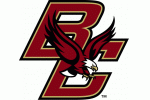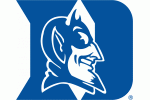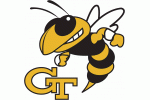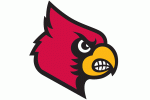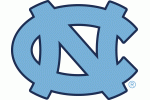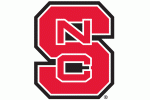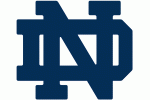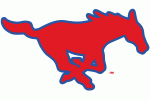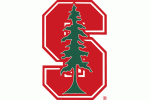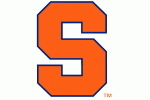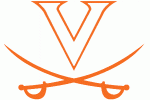There remains a southpaw in the backcourt
 Photo by Gregory Fisher/Icon Sportswire via Getty Images
Photo by Gregory Fisher/Icon Sportswire via Getty Images
Last week we kicked off a series of breakdowns for Notre Dame men’s basketball’s incoming class. First up was 5-star combo guard J.J. Starling, the crown jewel of Mike Brey’s 2022 haul. Next up is Marcus Hammond, a sweet-shooting lefty out of Queens, NY who spent the last four years at Niagara.
Without further ado, let’s get to it.
By the Numbers
Hammond led the Purple Eagles in scoring in two of the last three seasons. He capped out at 18.1 points per game as a senior while shooting 43% from the field, 37% from three and 83% from the free throw line. For his career he has posted a shooting slash of 41.8/38.9/81.1, and those percentages were consistent as both a rotational freshman and a full-time starter his final three seasons.
Outside of scoring, it’s yet to be seen just how much of a “team player” Hammond can be as a primary ball-handler and distributor. And that is by no means a roundabout way of calling him selfish. It’s just that Hammond never averaged more than 3.0 assists per game in a single season and his career mark is 2.5 per contest.
But context matters, and the reality is that, in each of Hammond’s four years there, Niagara never finished at or above .500 in their overall or conference record. The Purple Eagles were a perennial meandering team in the MAAC, finishing in the bottom half of the league each of Hammond’s first three seasons and finishing squarely in the middle of the pack his senior year.
Does that reflect on Hammond, at least somewhat? Sure. You might fault him for his defensive production (career averages of 0.8 steals and 0.1 blocks per game) and maybe for his turnovers (1.8 per game as a junior, 2.2 as a senior). But what’s more likely: Hammond held Niagara back from success or he carried them as far as he could?
It’s not like he was hogging the ball and running around the court with no rhyme or reason. They ran an offense and he was the focal point of it (and the opposing defense’s attention). His usage rate was about 25% as a sophomore and junior and nearly 30% as a senior. And yet, he didn’t suffer a disproportionate increase in turnovers and fouls nor a disproportionate decrease in his shooting percentages.
That’s a long-winded way of saying that Hammond hasn’t been a part of a collegiate roster with depth of talent comparable to Notre Dame’s. There’s a reason that Busting Brackets rated him as the 30th-best transfer prospect in men’s basketball this offseason. This guy can ball. Just see for yourself...
Film Breakdown & Player Comp: Prentiss Hubb
I’m merging these two categories because I think you can see the similarities. Yes, the fact that they’re both left-handed guards is low-hanging fruit. But as I said when comparing J.J. Starling to Blake Wesley, why make this more complicated than it needs to be?
And to be sure, they aren’t the same player. Hubb never averaged fewer than 4.0 assists per game in any of his four seasons with the Irish, although he turned the ball over at a much higher clip (2.7 per game as a sophomore, 3.2 as a junior) than Hammond did. But if we’re looking at last year’s version of each player: Hubb embraced the pass-first role Notre Dame needed him to play opposite Dane Goodwin, Paul Atkinson and Blake Wesley while Hammond was the go-to guy on a Niagara team that didn’t have any others.
/cdn.vox-cdn.com/uploads/chorus_asset/file/23591073/Hammond_off_ball_sequence.gif)
Via Next Ones
Watch that clip and see how active Hammond is off-the-ball. He’s face-guarded by the defense, runs off three picks, takes four total dribbles and drains a contested pull-up. Hubb may have been Notre Dame’s leading scorer as a junior, but he didn't have to put in this much effort regularly because the offense could flow through other capable shooters.
And Hammond’s off-ball experience will serve him well in a Notre Dame offense that stresses rotation around the perimeter and spacing to open driving lanes. But he also brings legitimate off-the-dribble scoring ability, whether it’s by sizing up to freeze his defender...
/cdn.vox-cdn.com/uploads/chorus_asset/file/23591102/Hammond_size_up_3.gif)
Via Next Ones
...getting to the paint and utilizing his floater...
/cdn.vox-cdn.com/uploads/chorus_asset/file/23591108/Hammond_drive_floater.gif)
Via Next Ones
...or getting all the way to the basket for a crafty finish.
/cdn.vox-cdn.com/uploads/chorus_asset/file/23591110/Hammond_blow_by_finish.gif)
Via Next Ones
If I’m differentiating, Hammond is probably a more aggressive AND more consistent version of Prentiss Hubb from an offensive standpoint. This is splitting hairs, but part of that analysis is the stock I put in good shooting form. It’s not that Hubb had bad form per se, but he almost never held his follow through and he shot the ball almost from his shoulder, and I think that had something to do with his streakiness.
/cdn.vox-cdn.com/uploads/chorus_asset/file/23591117/Prentiss_pull_up_3.gif)
Via ACC Digital Network
Hammond, on the other hand, almost always holds his follow through and has a nice high release point. His athleticism doesn’t wow you, but that high release point and the way he uses his physical tools (6-foot-3, 173 pounds) to his advantage make it appear that he is playing bigger than his actual size would suggest.
/cdn.vox-cdn.com/uploads/chorus_asset/file/23591129/Hammond_spin_floater.gif)
Via Next Ones
As for Hammond’s defense versus Hubb’s, neither was a lockdown player. Their per game steal and block averages are very comparable for their careers (0.9 and 0.2, respectively, for Hubb; 0.8 and 0.1 for Hammond). Maybe if Hammond has less of a burden to shoulder on the offensive end, he can commit a bit more on the defensive side, but I wouldn’t get my hopes up on that.
And this isn’t to say Hammond is a surefire better player than Hubb. He frustrated a lot of fans, but you have to admit that Prentiss hit quite a few big-time shots, drained clutch free throws and almost single-handedly willed the Irish to that 2020 win over Kentucky in Rupp Arena. Hammond is jumping head first into a brand new program in a conference with immensely updated competition; how he adjusts will be key.
2022-23 Outlook
Next year’s Notre Dame backcourt is going to be interesting to say the least. With Hubb and Wesley gone, it seems evident to me that Hammond is going to be starting alongside Dane Goodwin and J.J. Starling this fall. The only thing is that none of those guys is a pure point guard. Goodwin has always played off-ball, Hammond has been a primary scorer and Starling is a 5-star combo guard who also played off-ball most of his senior season.
However, I suppose Hubb was never really a pure point guard either; he sort of morphed into that role as his career progressed. With four years of experience helming an offense, Hammond is probably best suited to run the show on day 1, but he’s also a better shooter than Starling. In an ideal world, Mike Brey finds a way to give both Starling and Hammond chances to take their men off the dribble and kick to three point shooters when the defense collapses.
How Hammond adapts to having more capable pieces around him will be interesting to see, especially since both he and Starling are ball-dominant players who can get past defenders better than anyone else already on the roster. If Hammond embraces that floor general role and maintains his shooting efficiency, there may be an All-ACC honorable mention/3rd-team spot for him next spring.
/cdn.vox-cdn.com/uploads/chorus_asset/file/23591135/Hammond_4_point_play.gif)
Via Next Ones


